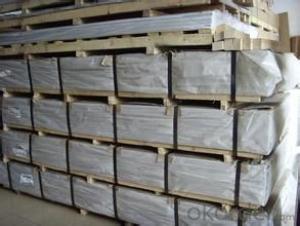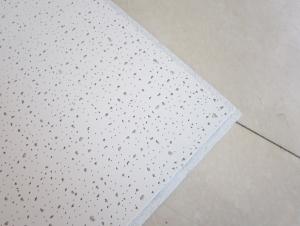Solar Edge Inverter Spec Sheet
Solar Edge Inverter Spec Sheet Related Searches
Decorative Ceiling Plate For Light Fixture Ceiling Plate For Hanging Light Fiber Sheet For Roof Plastic Wall Coverings For Bathrooms Plastic Corner Protectors For Furniture Decorative Lights For Ceiling Plastic Netting For Gardens Ceiling Brackets For Lights Hanging Ceiling Chairs For Bedrooms 42 White Ceiling Fan With LightHot Searches
Solar Edge Inverter For Sale Fiberglass Scaffolding For Sale Fiberglass Panels For Sale Fiberglass Greenhouses For Sale Type Of Scaffolding With Pdf Solar Inverter With 2 Battery Pedestal Fan With Water Spray Price Mini Inverter With Battery Online Shopping Solar Edge Inverter Price Ceiling Fan Lowest Price Solar Edge Inverter Sizes Pvc Chairs For Sale Plastic Roof Tiles For Sale Heavy Duty Plastic Chairs For Sale Plastic Sheets For Sale Fiber Sheet Price In India Gypsum Board Price Per Sheet In India pvc pipe manufacturers in usa Stainless Steel Sheet Near Me Plastic Fiber Sheet PriceSolar Edge Inverter Spec Sheet Supplier & Manufacturer from China
Okorder.com is a professional Solar Edge Inverter Spec Sheet supplier & manufacturer, offers integrated one-stop services including real-time quoting and online cargo tracking. We are funded by CNBM Group, a Fortune 500 enterprise and the largest Solar Edge Inverter Spec Sheet firm in China.Hot Products
FAQ
- The role of a solar inverter in a battery storage system is to convert the direct current (DC) electricity produced by the solar panels into alternating current (AC) electricity that can be used to power household appliances and charge the battery. It also manages the flow of electricity between the solar panels, battery, and the grid, ensuring optimal utilization of the stored energy and facilitating grid interaction when necessary.
- There are several advantages of using a solar inverter. Firstly, a solar inverter converts the direct current (DC) generated by solar panels into alternating current (AC) that can be used to power household appliances and electrical devices. This allows for the efficient utilization of solar energy, reducing reliance on traditional fossil fuel-based electricity sources. Secondly, solar inverters enable the integration of solar power systems with the electrical grid. By synchronizing the generated electricity with the grid, excess power can be fed back into the grid, resulting in net metering or feed-in tariff benefits. This not only reduces electricity bills but also contributes to the overall renewable energy mix, promoting sustainability and reducing carbon emissions. Another advantage is the monitoring and control capabilities provided by solar inverters. Many modern inverters offer real-time monitoring of energy production, allowing users to track the performance of their solar panels and identify any potential issues. Additionally, inverters often come with built-in safety features, such as ground fault protection, to ensure the safe operation of the solar power system. Overall, the advantages of using a solar inverter include efficient conversion of solar energy into usable electricity, integration with the electrical grid, cost savings, environmental benefits, and enhanced monitoring and safety features.
- A solar inverter handles voltage fluctuations from the grid by continuously monitoring the grid voltage and adjusting its output accordingly. When the grid voltage fluctuates, the inverter uses its internal control mechanisms to stabilize the output voltage, ensuring a consistent and stable supply of electricity to the connected solar panels or the grid. This helps protect the solar system from potential damage caused by voltage variations and allows for efficient power generation and distribution.
- Yes, a solar inverter can be used in areas with high dust and dirt accumulation, but it is important to take certain precautions and maintenance measures to ensure its proper functioning. Dust and dirt can accumulate on the surface of the solar panels, reducing their efficiency over time. This can also affect the performance of the solar inverter since it relies on the energy generated by the solar panels. To mitigate the impact of dust and dirt, regular cleaning of the solar panels is essential. This can be done by using a soft brush or sponge and mild detergent mixed with water. It is important not to use abrasive materials or excessive water pressure, as this can damage the panels. Additionally, installing the solar panels at an angle and positioning them to face the sun can help in reducing the accumulation of dust and dirt. Moreover, some solar inverters are designed with built-in protection against dust and dirt. These inverters usually have IP65 or higher ratings, which means they are dust-tight and can withstand water jets. Choosing such inverters can provide an added layer of protection against the adverse effects of dust and dirt accumulation. Overall, while a solar inverter can be used in areas with high dust and dirt accumulation, regular maintenance and proper cleaning of the solar panels are crucial to ensure optimal performance and longevity of the system.
- Yes, a solar inverter can be used with different types of grid connection standards. Solar inverters are designed to convert the direct current (DC) produced by solar panels into alternating current (AC) that is compatible with the electrical grid. They are versatile and can be programmed to work with various grid connection standards, such as single-phase or three-phase systems, different voltage levels, and frequency requirements. This allows solar inverters to be used in a wide range of grid configurations, making them adaptable to different regions and grid infrastructure.
- To calculate the maximum power point tracking (MPPT) efficiency for a solar inverter, you need to compare the actual power output of the inverter with the maximum power point (MPP) of the solar panel. It can be calculated by dividing the actual power output by the MPP power and then multiplying the result by 100 to get the efficiency in percentage. The formula is: MPPT efficiency = (Actual Power Output / MPP Power) * 100.
- The role of a solar inverter in voltage control is to convert the direct current (DC) generated by solar panels into alternating current (AC) that is suitable for use in the electrical grid. It also ensures that the voltage output from the solar panels matches the voltage requirements of the grid, thereby maintaining a stable and consistent voltage level. This helps prevent voltage fluctuations and ensures efficient power transmission and distribution.
- Yes, a solar inverter can be used with concentrated photovoltaic systems. Concentrated photovoltaic systems use lenses or mirrors to concentrate sunlight onto high-efficiency solar cells. The solar inverter's role remains the same in converting the DC power generated by the concentrated photovoltaic system into AC power that can be used for various applications.















































